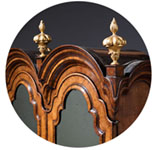William and Mary Kingwood or ‘Princes Wood’ Oyster Table Box
Circa 1690. England
SOLD
Request Information
Follow Us
William and Mary Kingwood or ‘Princes Wood’ Oyster Table Box, Circa 1690. England
The chest was originally designed to store tableware and was given the apt name ‘table box’.
The top opens on a hinge revealing a large space covered in silk velvet. The drawers are also lined in silk velvet. The chest is extremely rare and from the collective we have only been able to locate three examples in existence.
The attribution to the London cabinetmaker ‘Thomas Pistor’ is based on a group of pieces identified and previously with W.R. Harvey including two kingwood cabinets and a desk to which the table box offered here is clearly part of the same group. There were, in fact, two cabinetmakers called Thomas Pistor, father and son, working for a period at the same time but at different premises. One or both are known to have made furniture of quality for Levens Hall.
From the 4-18 August 1950 Country Life ran a series of articles featuring what was then the recently rebuilt Buxted Park, a house reconstructed by the architect Basil Lonides following a serious fire and in one of the illustrations a kingwood escritoire is visible. Subsequently, Christopher Gilbert commented in The ‘Dictionary of Marked London Furniture’, Leeds, 1996, p.44 that a “highly important kingwood fall-front cabinet inscribed ‘Thomas Pistor, Ludgate Hill, London’, formerly owned by the Hon. Basil Lonides, unfortunately, remains untraced. It was amongst the Buxted Park furniture at Sotheby’s, 25 September 1963, lot 168 (withdrawn)…”. The whereabouts of this escritoire remain unknown and further details of how the pieces are marked remain uncertain.
The overall profile and proportions of the Buxted escritoire conform to that of the table-box offered here and the W. R. Harvey cabinets as does the pattern of oysters visible on the frieze, and there is a strikingly similar large radiating circular pattern. It is undoubtedly the same maker responsible for the table-box offered here and for the two W.R. Harvey cabinets. There is an olive oyster example illustrated in ‘Woods In British Furniture Making 1400-1900’, by Adam Bowett, page 174, private collection.
Condition
Provenance
Literature
Dimensions
PREVIOUSLY SOLD
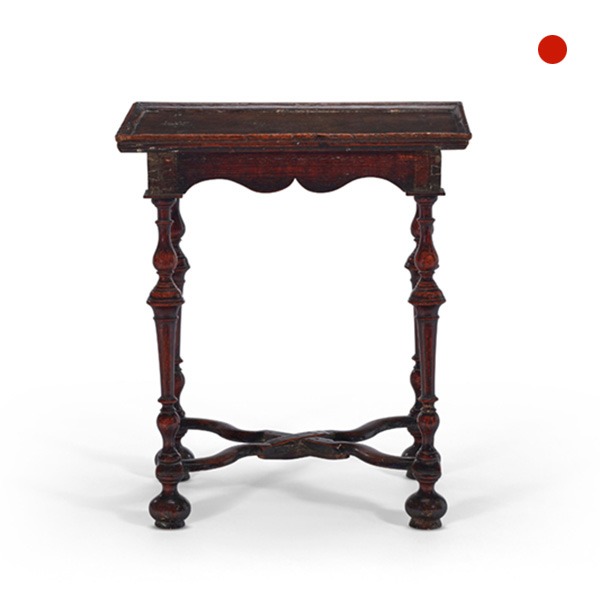
Important 17th Century William and Mary Oak Silver Table, Provenance Met Museum
Important 17th Century William and Mary Oak Silver Table, Provenance Met Museum SoldFollow...
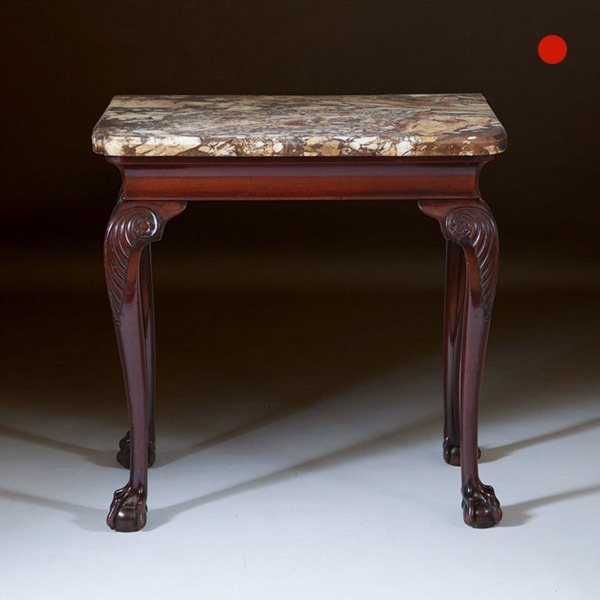
A Fine 18th Century George II Mahogany Marble Topped Console Table, Ireland
A Fine 18th Century George II Mahogany Marble Topped Console Table, Ireland SoldFollow UsA Fine...
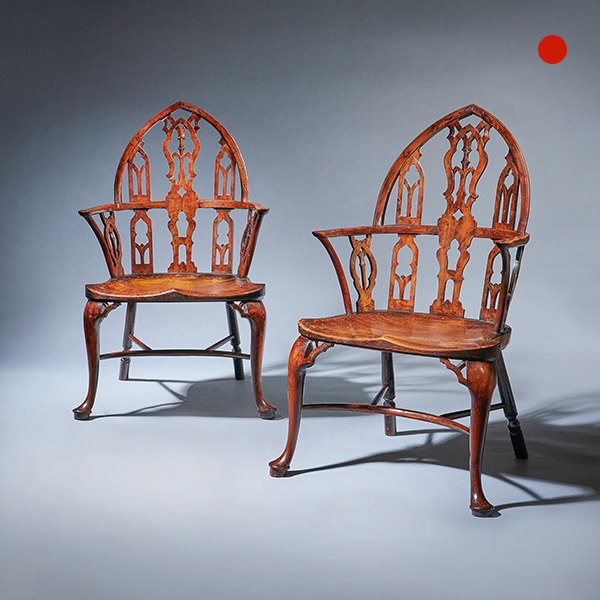
Pair of 18th Century George II Gothic Yew and Elm Windsor Armchairs, circa 1760
Pair of 18th Century George II Gothic Yew and Elm Windsor Armchairs, circa 1760 SoldFollow UsPair of 18th Century George II Gothic Yew and Elm Windsor Armchairs, circa 1760 The Windsor chair at its most elaborate and fine, the Gothic Windsor...
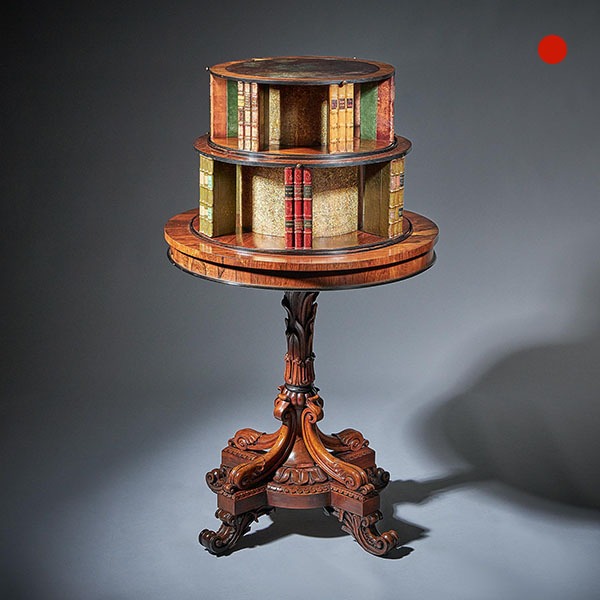
A Fine and Rare William IV Rosewood Revolving Library Bookcase Stamped P Westmacott
A Fine and Rare William IV Rosewood Revolving Library Bookcase Stamped P Westmacott SOLD[wpforms_selector form_id="11387" show_title="on" _builder_version="4.22.1" _module_preset="default" custom_margin="-30px||||false|false"...
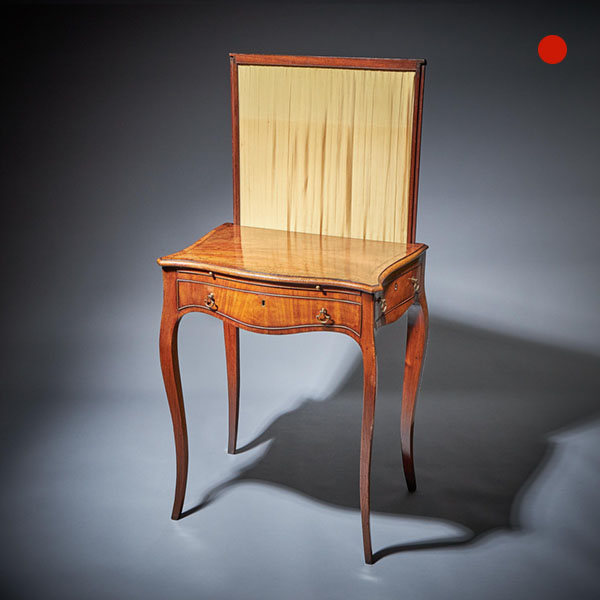
18th Century George III Chippendale Mahogany and Tulipwood Writing Table, C1770
18th Century George III Chippendale Mahogany and Tulipwood Writing Table, C1770 SoldFollow Us18th...
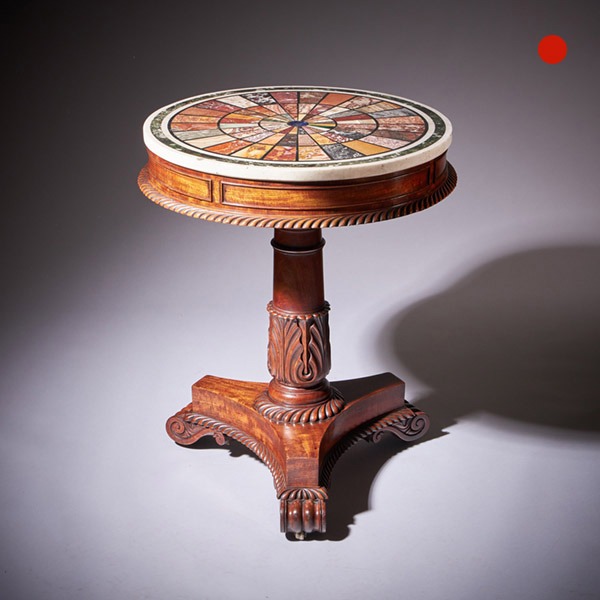
A Gillows George IV Regency Carved Mahogany Grand Tour Specimen Marble Table
A Gillows George IV Regency Carved Mahogany Grand Tour Specimen Marble Table SoldFollow UsA...

Important 17th Century William and Mary Oak Silver Table, Provenance Met Museum
Important 17th Century William and Mary Oak Silver Table, Provenance Met Museum SoldFollow...

A Fine 18th Century George II Mahogany Marble Topped Console Table, Ireland
A Fine 18th Century George II Mahogany Marble Topped Console Table, Ireland SoldFollow UsA Fine...

Pair of 18th Century George II Gothic Yew and Elm Windsor Armchairs, circa 1760
Pair of 18th Century George II Gothic Yew and Elm Windsor Armchairs, circa 1760 SoldFollow UsPair of 18th Century George II Gothic Yew and Elm Windsor Armchairs, circa 1760 The Windsor chair at its most elaborate and fine, the Gothic Windsor...

A Fine and Rare William IV Rosewood Revolving Library Bookcase Stamped P Westmacott
A Fine and Rare William IV Rosewood Revolving Library Bookcase Stamped P Westmacott SOLD[wpforms_selector form_id="11387" show_title="on" _builder_version="4.22.1" _module_preset="default" custom_margin="-30px||||false|false"...

18th Century George III Chippendale Mahogany and Tulipwood Writing Table, C1770
18th Century George III Chippendale Mahogany and Tulipwood Writing Table, C1770 SoldFollow Us18th...

A Gillows George IV Regency Carved Mahogany Grand Tour Specimen Marble Table
A Gillows George IV Regency Carved Mahogany Grand Tour Specimen Marble Table SoldFollow UsA...
YOU MAY ALSO LIKE
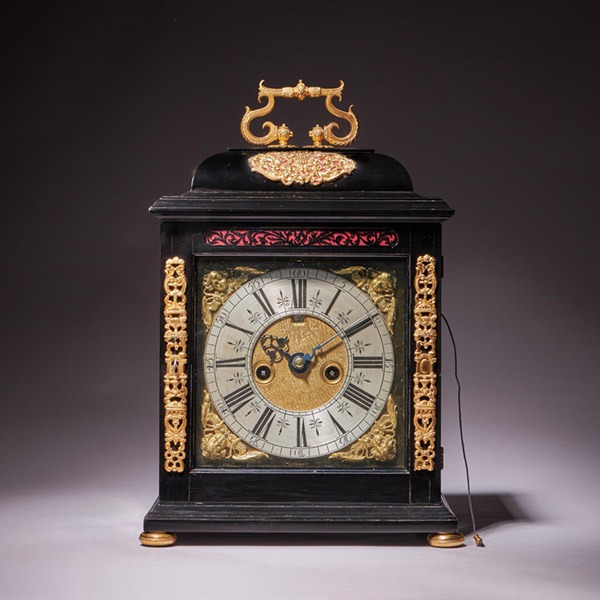
A 17th Century William and Mary eight-day table clock by Isaac Lowndes, 1695
A 17th-Century William and Mary eight-day table clock by Isaac Lowndes, 1695 £26,900Follow UsA...

A superb 19th century eight day grande sonnerie carriage clock, circa 1870.
A superb 19th century eight day grande sonnerie carriage clock, circa 1870. £3,950Follow UsA...

A Unique 18th Century Georgian Urn Clock by Paul Rimbault Soho London 1770
A Unique 18th Century Georgian Urn Clock by Paul Rimbault, Soho London, 1770 £34,900Follow UsA...
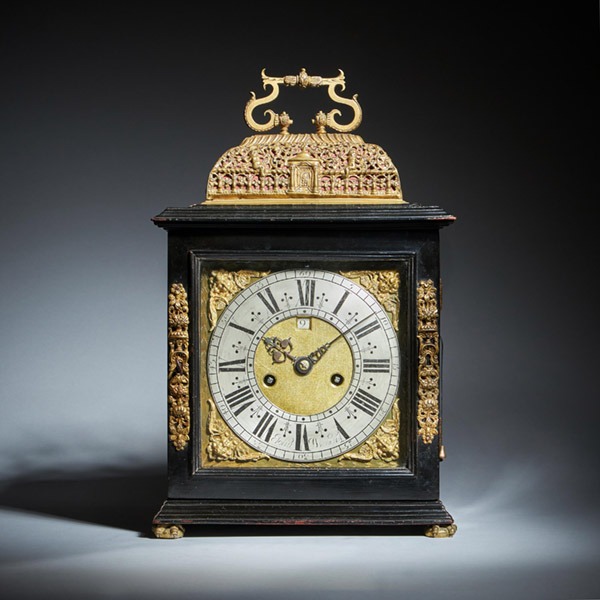
17th Century English eight-day spring-driven table clock by John Wrench
17th Century English eight-day spring-driven table clock by John Wrench £26,900Follow Us17th...
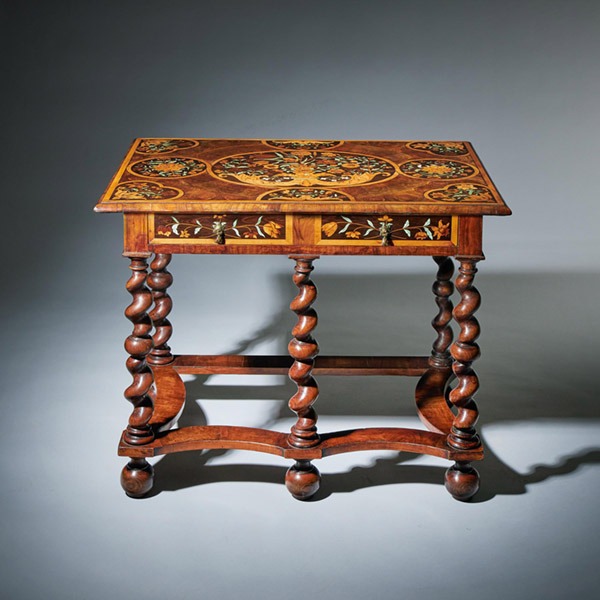
Highly Important 17th Century Charles II Floral Marquetry table by Gerrit Jensen
Highly Important 17th Century Charles II Floral Marquetry table by Gerrit Jensen £68,000Follow...

A 17th Century William and Mary eight-day double basket table clock by Asselin
A 17th Century William and Mary eight-day double basket table clock by Asselin £26,900Follow UsA...

A 17th Century William and Mary eight-day table clock by Isaac Lowndes, 1695
A 17th-Century William and Mary eight-day table clock by Isaac Lowndes, 1695 £26,900Follow UsA...

A superb 19th century eight day grande sonnerie carriage clock, circa 1870.
A superb 19th century eight day grande sonnerie carriage clock, circa 1870. £3,950Follow UsA...

A Unique 18th Century Georgian Urn Clock by Paul Rimbault Soho London 1770
A Unique 18th Century Georgian Urn Clock by Paul Rimbault, Soho London, 1770 £34,900Follow UsA...

17th Century English eight-day spring-driven table clock by John Wrench
17th Century English eight-day spring-driven table clock by John Wrench £26,900Follow Us17th...

Highly Important 17th Century Charles II Floral Marquetry table by Gerrit Jensen
Highly Important 17th Century Charles II Floral Marquetry table by Gerrit Jensen £68,000Follow...

A 17th Century William and Mary eight-day double basket table clock by Asselin
A 17th Century William and Mary eight-day double basket table clock by Asselin £26,900Follow UsA...
